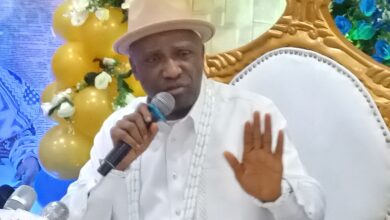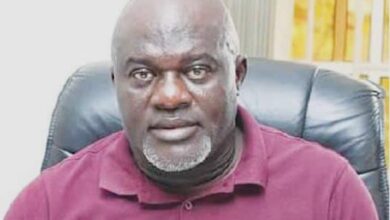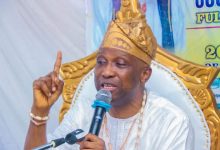Moonsighting in Nigeria, Simwal Usman Jibril

The arrival of the months of Ramadan and Shawwal brings up the old subject of moonsighting, with different and divisive views on the official announcement of commencement or ending Ramadan by His Eminence the Sultan of Sokoto. This article will seek to explain the concept of lunation (the period of time from one new moon to the next) and the activities of the National Moonsighting Committee (NMSC) of the Nigerian Supreme Council for Islamic Affairs Nigeria (NSCIA).
The Prophet S.A.W said “Fast when you see it (i.e the moon) and cease fasting when you see it, and if it is hidden or cloudy, then complete 30 days”. The hadith is agreed upon (i.e. narrated by Buhari and Muslim).

Lunation of the moon
First it should be noted that the moon is a solid body and does not shine light in itselfunlike the sun or stars but its light is reflection from the sunlight that falls on its surface. This fact is also alluded to from the following verse of the Qur’an: “It is He (Allah) who made the sun shine and the moon glow and determined the lunar phases that you may know the number of years and calculation” (Yunus 10:5).
The moon orbits the earth once every 29.53 days (average of synodic month). Because of this revolution, phases of the moon change as the moon’s position changes relative to the earth and the sun.
During the moon’s orbit, if the moon, earth and the sun lie exactly at the same line and the moon is in the middle, the sun will illuminate half of the moon that faces it, and the other half which faces us, will be dark because it does not reflect rays of the sun. At this point, the moon is called astronomical new moon (conjunction of a new moon). After that, the moon continues orbiting the earth and begins to reflect a small amount of sun’s rays and now we see the moon as a very small waxing crescent. Afterwards, it becomes first quarter, full moon, last quarter, waning crescent and then wane again. The newmoon phase is certainly a unique instant all over the world.
Moon’s age is measured from the moment of conjunction (newmoon). We often say this fullmoon is 14 days old, which means that the number of days after the new moon is 14. And we say this crescent is about 2-3 days old or 5 hours old.
The new moon is located exactly at the sun’s direction, so the sun’s glare will prevent us from seeing it. In addition, the percentage of the reflected rays out of the new moon is almost zero, but this percentage increases as the moon’s age increases. Generally, the human eye through a telescope can’t detect any reflected rays on the moon if the moon’s age is less than about 12 hours, while unaided naked eye cannot detect any reflected rays on the new moon until after about 17 hours following conjunction. The new waxing crescent is located near the sun, so it is not possible to sight it until after sunset, because it is obviously not possible to observe the thin waxing crescent before sunset. In addition, we must wait a reasonable time until the twilight decreases, i.e. until we can differentiate between moon’s light and twilight glare, a 10-minute period could be enough sometimes to detect the thin waxing crescent.
The moon, like the sun, rises from the east and sets after about 12 hours at the west (with exceptions at high-latitude areas) each day, and since the waxing crescent lies near the sun, it will set after the sunset. The new moon rises and sets at about the same time as the sun, but as the moon moves in its orbit around the earth, it will progressively move towards the east away from the sun as the days pass by after the new moon. The moon will rise about 50 minutes late after a day, and that is why a new crescent on a second day is seen for a longer period after sunset compared to the first day before it sets.
There are several factors that must be met in order to view the thin waxing crescent: Some of these factors are:-
- The crescent’s altitude (i.e. height above the horizon).
- The angular distance between the centers of sun and moon.
- The moon’s Lag time (the interval between the sunset and the moon set).
- The azimuth difference between the sun and the moon.
With the above brief explanation, it ishopefully clear how a new moon occurs. The point of contention is usually the size of the moon on the second evening when it is easily visible to virtually everybody. there are divisive opinions, some think it is too big for the first day crescent, while others believe it’s a two-day old crescent. As mentioned above, age of a moon is counted after conjunction of itsnew moon. For instance, the conjunction of Ramadan 1439H moon occurred on the 15th May 2018 at 12:48PM Nigerian time, which was equivalent to 28th Shaaban Nigeria official Islamic date. So by evening of that day in Nigeria the crescent was about 6 hours old in Nigeria and moon set was about 12 minutes after sunset. So it was not possible to sight a 6 hours old crescent that evening.
The following day 16thMay ( 29th Shaaban 1439H official Nigerian Islamic date) by sunset the crescent was about 30 hours old and moonset was about 1 hour 12 minutes after sunset, the crescent was sighted in different locations in Nigeria and we commenced Ramadan the next day on the 17th May.
On the 17thMay, first day of Ramadan the crescent was clearly visible to everybody, after sunset that evening the crescent was about 54 hours old (more than 2 days old) and moon set was 2 hours 13 minutes after sunset. This brought about the argument that the crescent was too big for the first day of Ramadan. The reason it was quite big was that it was technically more than 2 days old but Islamically it was a day old based on actual naked eye sighting.
Similar scenario happened at the end of Ramadan. The conjunction of Shawwal crescent occurred on Wednesday the 13th June ( 28th Ramadan 1439) at 8:43PM Nigerian time. It is important to note that since conjunction of the new moon occurred after sunset same evening the moon has set before sunset and hence it is no more on the horizon. For this reason it is absolutely impossible to see it. The next day, Thursday 29th Ramadan 1439 (14th June 2018) by sunset the crescent was 22 hours old and moonset was about 50 minutes after sunset. The crescent was seen in different locations in Nigeria and His Eminence The Sultan of Sokoto declared Friday 1st Shawwal1439 (15th June 2018).
The following evening on Friday 1st Shawwal(15th June), by sunset the crescent was about 46 hours (almost 2 days) old and moonset was about 1hour 54minutes after sunset. That was why the crescent was again relatively big and clearly visible.
Activities of National Moonsighting Committee
The committee comprises of Ulamas (Islamic scholars), scientist, astronomers and other dedicated members. The committee is tasked with coordinating the sighting of new crescent in Nigeria for all the twelve lunar months from Muharram to DhulHijjah every year, and it is also saddled with the responsibility of verifying sighting claims.
On the 27th of every Islamic month a reminder is sent to all members to endeavor to search for the new crescent and report back (positive or negative). A report of the sighting outcome is then written and sent to His Eminence with appropriate recommendations based on the sighting result advising him to either declare the next day beginning of the next lunar month if there is positive sighting or announce completion of 30 days for the current month if the resultsare negative.
His Eminence further discusses with the Sultanate Advisory Counciland then officially declares beginning of every month via a press release signed by the Secretary of Sultanate Advisory Council on his behalf.
Some of the questions asked during verification are;
- What time was the crescent sighted?
- Was sunset visible or it was cloudy?
- What side of sunset was the crescent sighted? (Note: new crescent’s position just like the sun is not fixed, it is different for every month).
- What was the moon’s orientation? (The crescent orientation also changes with the monthsitshorns may be slightly tilted to the north, slightly tilted to the south or face directly upwards. But a new crescent never faces down.
- What was the last time the crescent was sighted?
Verifying sighting claims
The moment a crescent sighting reportis received, the committee takes full contact address and phone numbers of witnesses to follow up and verify the report. I will mention a few of the verification exercise carried out by the committee (names are withheld for privacy reasons).
- There was a Shawwal crescent sighting claim on Wednesday evening 13th June from Argungu Kebbi State. Werequested for the phone numbers and names of those who sighted it, but as I write this article we are yet to receive it. We followed up by sending someone toArgungu to search and ask around but yet nobody came forward to own up sighting report.
- There was a sighting claim too on Wednesday 13th June/28th Ramadan at Wauru in Sokoto. We followed up and found out that about 100 people gathered to search for the Shawwal crescent because they believed Ramadan was started a day late. Only one person out of the gathering claimed sighting the crescent and it wasn’t sighted by the rest and hence they all rejected his sighting claim.
- Some years back in Adamawa, three persons claimed sighting the crescent. They were invited for verification separately. The first person said he saw it at so and so time and described that the crescent’s orientation was facing slightly southwards. The second person gave a totally different description of the crescent and position and the last person also gave a totally different narration.
- There was a crescent sighting claim in Lere. That day it was a cloudy and rainy but still the person claimed he saw the crescent. A member of the committee was dispatched to Lere the next day. He met the witness and the witness claimed he was with a second person, but he alone saw the crescent between clouds just under an electric pole wire. The second person then claimed he raised his arms and prayed to Allah to make him amongst those few favored and blessed people that will see the new Ramadan crescent, and he claimed that Allah answered his prayer and the crescent reappeared for some seconds in same location under the pole wire and then disappeared. (Strangely, the pole wire in question was in fact in the southern direction not west!!)
These are just a few examples of what the National Moon Sighting Committee goes through and experiences with persons claiming sighting crescents in the cause of discharging its responsibility.May Allah guide us all to further our understanding and teachings of Islam, ameen. May He accept our worship and prayers during thesacred month of Ramadan, forgive our sins and overlook our shortcomings, grant us His blessings and favor, ameen. May He keep us united on the right path in service of His religion and dedication to the cause of His Prophet (sallalahualaihiwasallam) ameen.
*Simwal Usman Jibril (simwaljibril@yahoo.com, Twitter @simwal), is a Member, National Moonsighting Committee, Nigerian Supreme Council for Islamic Affairs, Abuja, Nigeria, Member Islamic crescent observation project Abu Dhabi UAE www.icoproject.org, Member Islamic Research and Timing Organization Kaduna Nigeria (Producers of Timing Committee Islamic Hijri Calendar) and Member Board of Trustees Astro Qibla Initiative Nigeria.









